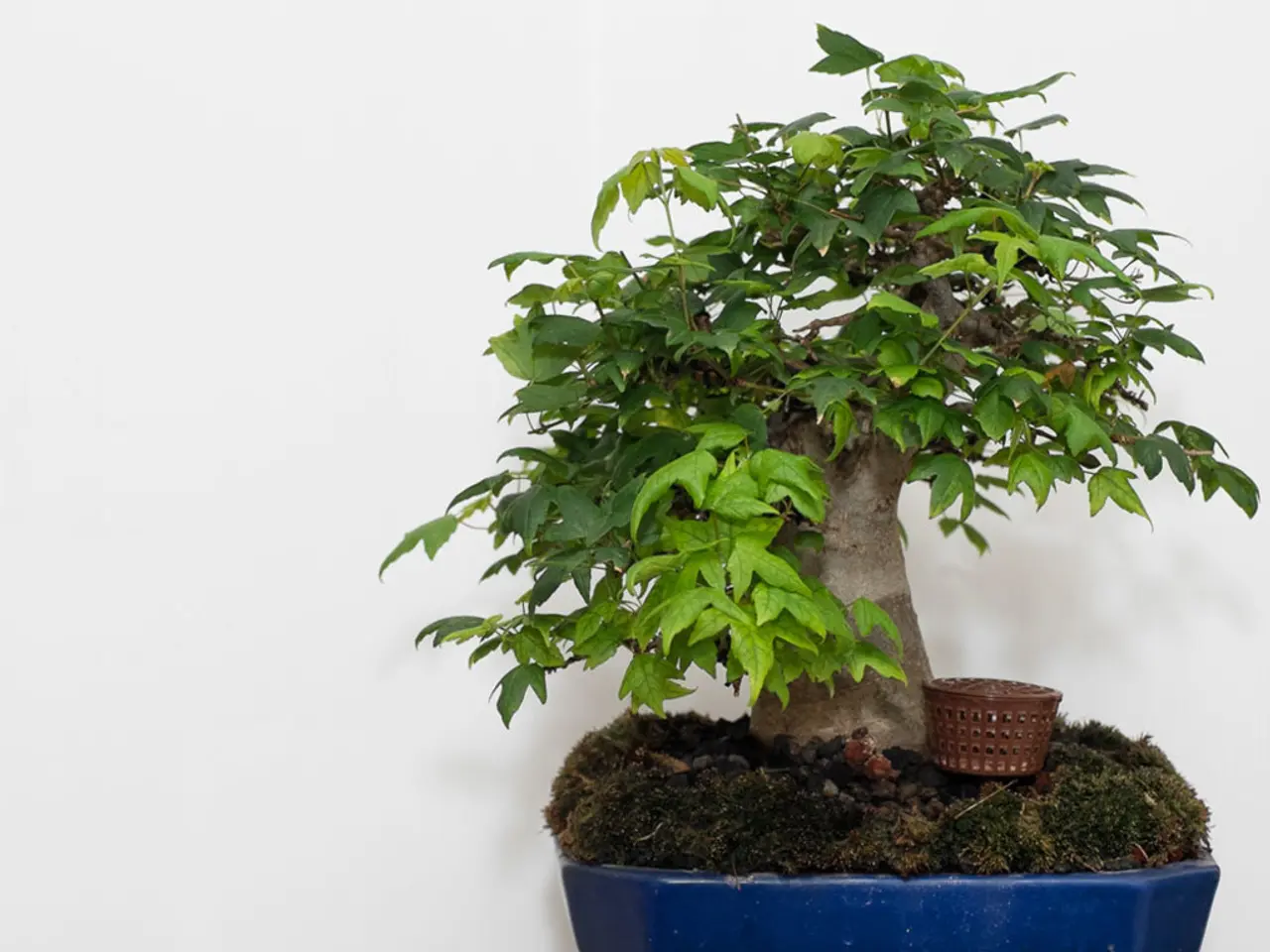Cultivating Balanced Growth in Bonsai using Inclinature Techniques in Literati Style
In the intricate world of bonsai, one technique stands out for creating a sense of dynamic movement and visual interest - inclinature. This technique, a cornerstone of Literati bonsai, mimics the natural struggle and adaptation of trees in harsh environments, breathing life into the bonsai's form.
Suggesting a narrative of resilience and survival, inclinature replicates how trees in the wild grow at an angle, often contorted by wind, gravity, or competition for light. This adds a layer of depth to the bonsai, making it appear more alive and expressive.
By inclining the trunk and branches, Literati bonsai exhibit a flowing, dynamic line rather than a rigid, upright posture. This flow guides the viewer’s eye through the tree, creating rhythm and movement within the composition. The result is a harmonious blend of movement and stillness, a testament to the essence of Literati bonsai.
Inclining parts of the tree also creates asymmetry, which is visually engaging. The balance achieved through careful inclinature feels natural and spontaneous, adding to the tree's aesthetic appeal. A slight lean or curve can make the trunk look taller and more graceful, amplifying height and elegance - characteristics of the Literati style's emphasis on simplicity and elegance.
When working with young or newly styled Literati bonsai, it is generally recommended to delay inclinature until the tree has established a strong root system and sufficient structural integrity to support the stress of intentional leaning. The trunk's alignment with the pot's rim and the surrounding space guarantees a sense of harmony and balance.
Deliberate placement of branches and foliage in a Literati bonsai enables the artist to create a sense of equilibrium and harmony, even when the trunk is markedly inclined. A well-balanced Literati bonsai exudes a sense of serenity, inviting the viewer to pause and appreciate its beauty.
Creating harmony in asymmetry lies in manipulating the visual weight of the Literati bonsai's components to achieve a sense of balance and stability. Maintaining tree health during inclinature is vital to guarantee the tree's long-term viability and continued elegance.
Strategic branch placement helps to counterbalance the inclination, creating a sense of equilibrium. The careful distribution of visual mass, the deliberate angling of branches, and the deliberate asymmetry all converge to create a sense of serenity and equilibrium in Literati bonsai.
The bonsai's visual flow should guide the viewer's eye gently around the tree, creating a sense of harmony and movement. During the inclinature process, watering frequency depends on environmental factors, soil type, and tree species.
Combining inclinature with twisting or other styling techniques can create a visually striking bonsai, but requires careful planning to avoid conflicting visual cues and guarantee harmony in the overall design. The process of coaxing the Literati bonsai into a state of dynamic balance is meditative, requiring patience, empathy, and profound respect for the living organism.
Harmonizing inclinature with foliage distribution is essential to maintain visual harmony in Literati bonsai. Carefully selecting the ideal viewing angle is crucial, as it markedly influences how the inclinature of the Literati bonsai is perceived and appreciated.
In this harmonious balance of movement and stillness, the essence of Literati bonsai is distilled. Understanding the Literati bonsai's structural limits is crucial to achieve the desired inclinature without causing harm. Preventing wire marks and ensuring gentle tension through wiring and guying for support are key considerations in the process.
Through a series of subtle, incremental adjustments, the Literati bonsai's inclinature design can be refined over time, fostering a deeper sense of harmony and balance between the tree's natural growth patterns and its carefully crafted, asymmetrical silhouette. When working with Literati bonsai featuring brittle wood, exercise caution as excessive bending can cause breakage; gentle, gradual inclinature techniques and careful monitoring of tree stress are essential to achieve successful, balanced results.
In conclusion, the art of inclinature in Literati bonsai is a masterful stroke, infusing the design with a sense of dynamism, as the tree's resilience is revealed in its subtle, yet deliberate, surrender to gravity. By understanding and applying the principles of inclinature, bonsai artists can create living, moving works of art that captivate and inspire.
- In the realm of fashion-and-beauty, makeup artists often rely on the concept of inclinature to create visually fascinating looks, mimicking the natural lean or curve of Literati bonsai.
- Similar to the harmonious balance achieved in Literati bonsai, self-development programs encourage individuals to maintain a dynamic balance between growth and stillness, emulating the essence of inclinature.
- In the home-and-garden sector, interior designers sometimes employ inclinature as a stylistic technique, subtly tilting furniture or arranging plants for added visual interest and a sense of movement.




